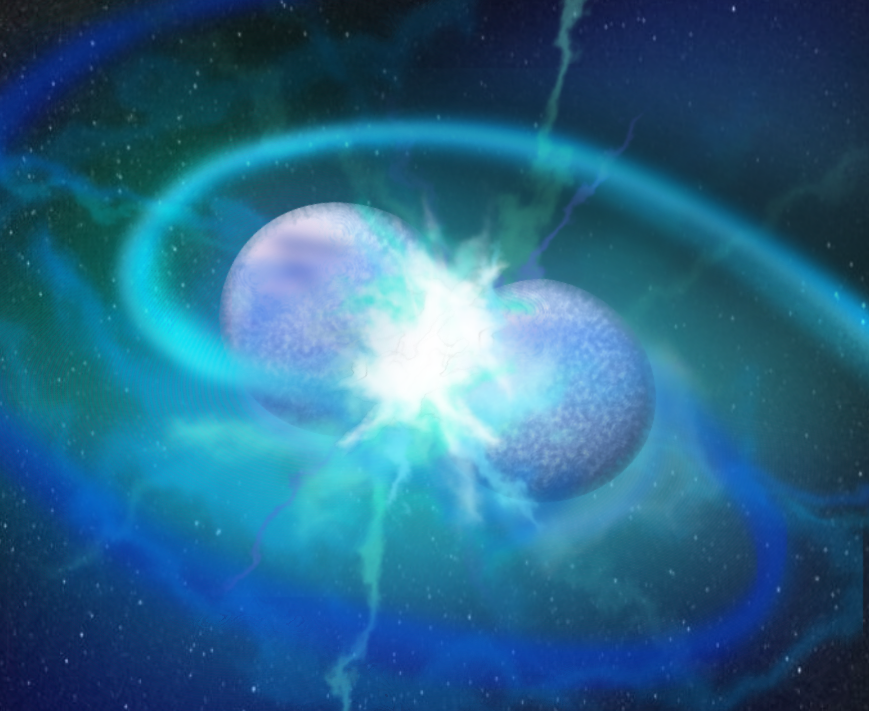Incredibly rare stellar merger may have created strange stars

Two particularly strange stars may have formed in a lucky collision, according to new research.
What makes these two stars unusual is the high levels of carbon and oxygen at the surface of their atmospheres. Those elements are left behind as a star burns its helium, but that process takes place in the star's core and wraps up long before carbon and oxygen start to dominate the star's atmosphere. Weirdly, these stars seem to still be running through helium despite their odd surfaces.
"Normally we expect stars with these surface compositions to have already finished burning helium in their cores, and to be on their way to becoming white dwarfs," Klaus Werner, an astronomer at the University of Tübingen in Germany and lead author of one new study of these strange stars, said in a statement from the Royal Astronomical Society (RAS), which published the new research in its journal. "These new stars are a severe challenge to our understanding of stellar evolution."
Related: The best Hubble Space Telescope images of all time!
Specifically, the scientists looked at two stars dubbed PG1654+322 and PG1528+025. Except for the high levels of carbon and oxygen in their atmospheres, these two stars look like other small, hot stars on their way to becoming white dwarfs, the dense "stellar corpses" left behind when small and medium stars run out of fuel to burn.
And yet, because of the size and temperatures of these two stars, astronomers believe these objects are still burning helium. But usually, stars sport the light elements hydrogen and helium at their surfaces, not the much heavier carbon and oxygen.
A second team of scientists has proposed a theory for how these strange stars may have come to be.
Get the Space.com Newsletter
Breaking space news, the latest updates on rocket launches, skywatching events and more!
"We believe the stars discovered by our German colleagues might have formed in a very rare kind of stellar merger event between two white dwarf stars," Marcelo Miller Bertolami, an astronomer at the Institute for Astrophysics of La Plata in Argentina and lead author of the second paper, said in the RAS statement.
"Usually, white dwarf mergers do not lead to the formation of stars enriched in carbon and oxygen," Miller Bertolami said, "but we believe that, for binary systems formed with very specific masses, a carbon- and oxygen-rich white dwarf might be disrupted and end up on top of a helium-rich one, leading to the formation of these stars."
Even with that explanation, however, the observations astronomers have gathered still don't quite add up, and scientists aren't sure how the collision would occur in the first place. That means the researchers in particular want to focus on models exploring the behavior of binary stars, pre-merger.
The results are described in two papers published Jan. 7 and Feb. 12 in the journal Monthly Notices of the Royal Astronomical Society.
Email Meghan Bartels at mbartels@space.com or follow her on Twitter @meghanbartels. Follow us on Twitter @Spacedotcom and on Facebook.
Join our Space Forums to keep talking space on the latest missions, night sky and more! And if you have a news tip, correction or comment, let us know at: community@space.com.

Meghan is a senior writer at Space.com and has more than five years' experience as a science journalist based in New York City. She joined Space.com in July 2018, with previous writing published in outlets including Newsweek and Audubon. Meghan earned an MA in science journalism from New York University and a BA in classics from Georgetown University, and in her free time she enjoys reading and visiting museums. Follow her on Twitter at @meghanbartels.









